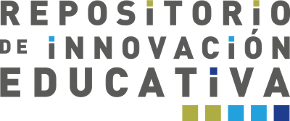Por favor, use este identificador para citar o enlazar este ítem:
https://www.innovacioneducativa.unam.mx:8443/jspui/handle/123456789/5451| Título : | Degining Translational Research: Implications for Training |
| Autor : | McGartland Rubio, Doris Schoenbaum, Ellie Lee, Linda Schteingart, David Marantz, Paul Anderson, Karl Dewey Platt, Lauren Baez, Adriana Esposito, Karin |
| Fecha de publicación : | 2010 |
| Resumen : | Because translational research is not clearly defined, developers of translational research programs are struggling to articulate specific program objectives, delineate the knowledge and skills (competencies) that trainees are expected to develop, create an appropriate curriculum, and track outcomes to assess whether program objectives and competency requirements are being met. Members of the Evaluation Committee of the Association for Clinical Research Training (ACRT) reviewed current definitions of translational research and proposed an operational definition to use in the educational framework. In this article, the authors posit that translational research fosters the multidirectional and multidisciplinary integration of basic research, patient-oriented research, and population-based research, with the long-term aim of improving the health of the public. The authors argue that the approach to designing and evaluating the success of translational training programs must therefore be flexible enough to accommodate the needs of individual institutions and individual trainees within the institutions but that it must also be rigorous enough to document that the program is meeting its short-, intermediate-, and long-term objectives and that its trainees are meeting preestablished competency requirements. A logic model is proposed for the evaluation of translational research programs. |
| URI : | http://132.248.161.133:8080/jspui/handle/123456789/5451 |
| ISSN : | 1938-808X 1040-2446 |
| metadata.dc.identifier.url: | https://pdfs.journals.lww.com/academicmedicine/2010/03000/Defining_Translational_Research__Implications_for.21.pdf?token=method|ExpireAbsolute;source|Journals;ttl|1543614128913;payload|mY8D3u1TCCsNvP5E421JYK6N6XICDamxByyYpaNzk7FKjTaa1Yz22MivkHZqjGP4kdS2v0J76WGAnHACH69s21Csk0OpQi3YbjEMdSoz2UhVybFqQxA7lKwSUlA502zQZr96TQRwhVlocEp/sJ586aVbcBFlltKNKo+tbuMfL73hiPqJliudqs17cHeLcLbV/CqjlP3IO0jGHlHQtJWcICDdAyGJMnpi6RlbEJaRheGeh5z5uvqz3FLHgPKVXJzd++Xw1xrBvVGm3URNugOVtRWMi0TTAvMxag8SkavBSkVSzOW3K7hUcMzTk10+8NPs;hash|14hvF3pstdNhqrDK7Q4Etg== |
| metadata.dc.type: | Artículo |
| Aparece en las colecciones: | Investigación traslacional |
Ficheros en este ítem:
No hay ficheros asociados a este ítem.
Los ítems de DSpace están protegidos por copyright, con todos los derechos reservados, a menos que se indique lo contrario.


